You may have heard of the great benefits of probiotic kombucha. Developing a habit for store-bought kombucha can become quite expensive, though. So let us show you how easy it is to brew your own kombucha with this homemade kombucha recipe.
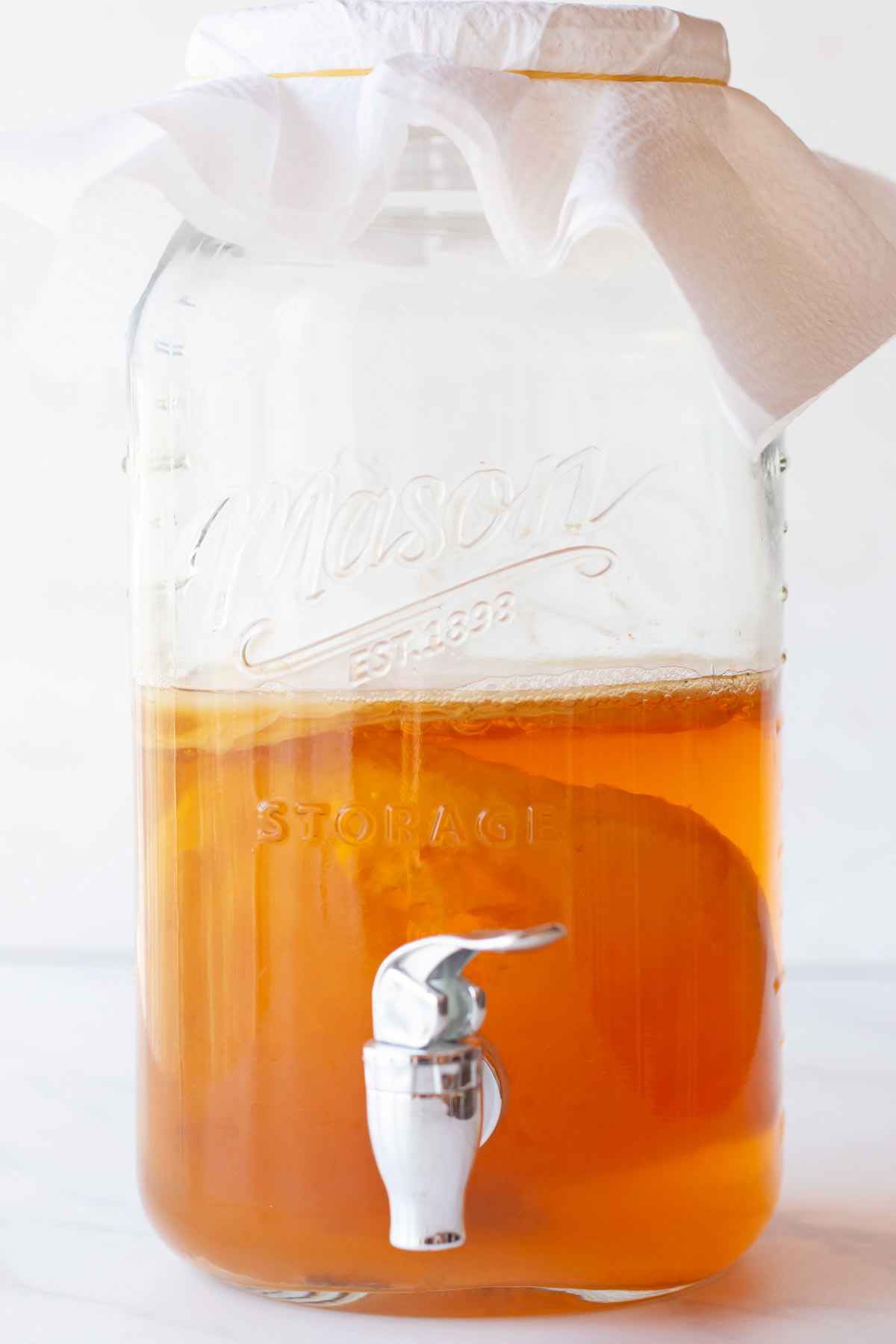
Jump to:
This is the second post in my Kombucha series. Find the other posts HERE:
>> How to Make a Kombucha Scoby
>> How to Flavor Kombucha with Second Fermentation
About Kombucha
Kombucha is a fermented tea that one can make with caffeinated tea (either black, green, or white), white or cane sugar, a SCOBY (symbiotic culture of bacteria and yeast), and some strong brewed kombucha from a storebought bottle or homemade batch. While it has gained renown today for how it can aid digestive health and is full of B vitamins, it has supposed Chinese origins. However, people in Eastern Europe have been making it for a long time too.
Several brands exist that make kombucha but they can be quite expensive, especially if you gather a deep love of the taste. Kombucha can range in taste as manufacturers and homebrewers can vary fermentation times leading to a slightly sweeter or more vinegary brew. Moreover, the taste of kombucha can change depending on whether it underwent second fermentation or had fruit or herbs infused into it.
Generally, people who start brewing homemade kombucha ferment it for about 7 to 14 days, or until the tea tastes like a very fizzy beverage with a balance between sweet and tart, almost like apple cider. However, people who have really garnered a taste for kombucha tend to ferment their kombucha for even longer until it becomes tangier. The best part of making homemade kombucha is that you can decide on the flavours you add to it and how long you ferment it.
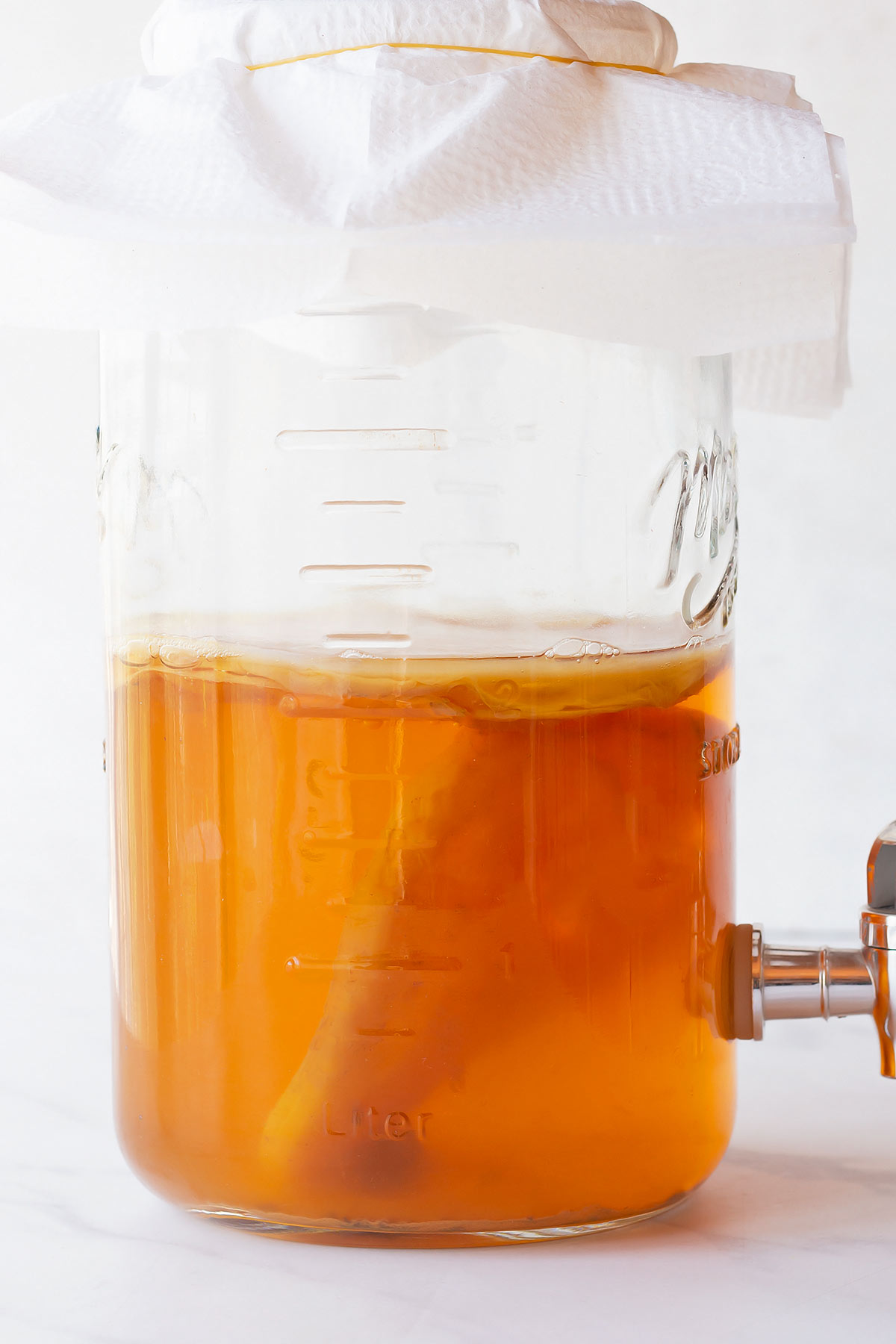
Health Benefits of Kombucha
While there are some health benefits to kombucha, it is not necessarily a panacea that will cure all your problems. Rather, it is a nutritious beverage that one can include as part of a healthy diet. It is also wonderful to drink as a replacement to pop as it is lower in sugar, has amazing flavour, and is fizzy.
Kombucha can promote a healthy gut and digestive system. This is because it is fermented with a SCOBY, which contains many types of bacteria and yeast which can diversify your microbiome with probiotics. Having a more diverse microbiome may aid your body to extract nutrients from the foods you eat and pass those foods through your body more efficiently.
The process of fermenting the kombucha also leads to it containing small amounts of B vitamins such as B12, B6, and B1. This is common in other fermented products, such as sauerkraut or fermented cucumbers, as well.
Despite the high quantity of sugar that one begins with when they make kombucha, it can be a safe beverage for diabetics to consume. This is because the yeast feeds on most of it during the fermentation process, resulting in the build-up of CO2 and fizz in the kombucha.
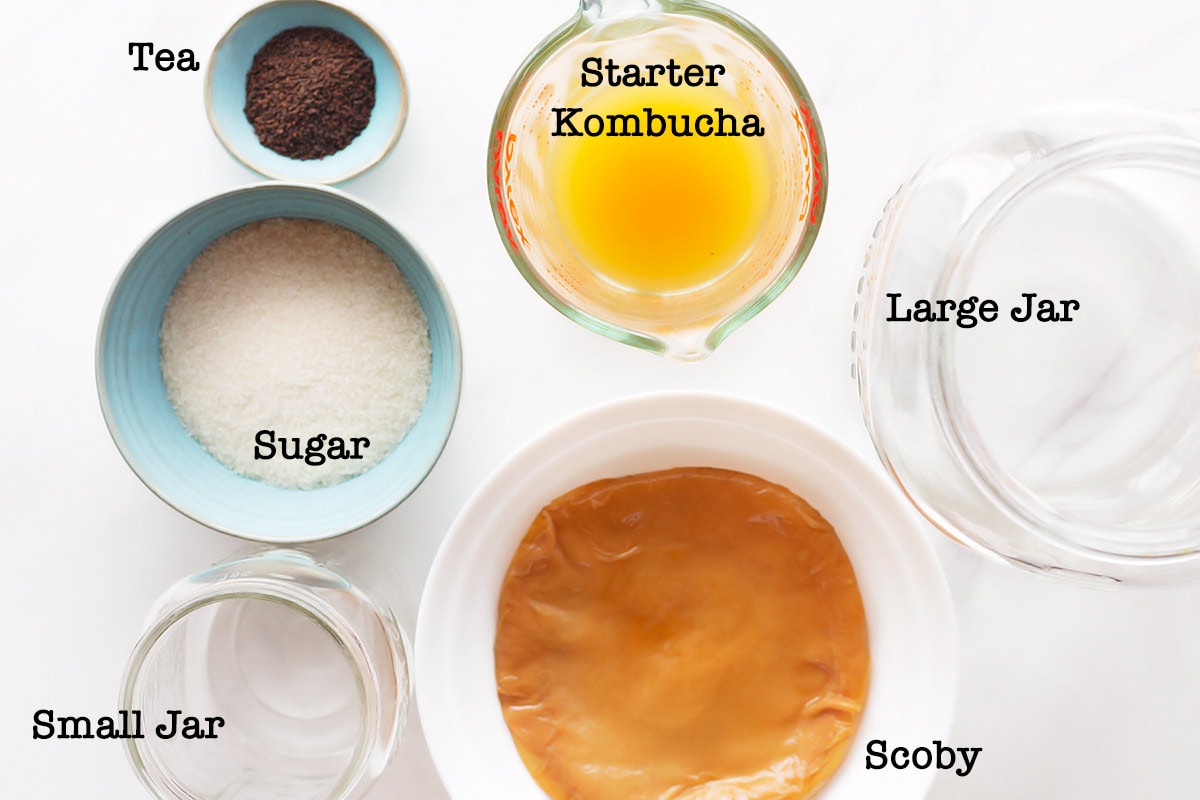
Ingredients and Tools You need for Kombucha Brewing
To start brewing kombucha you need tea (loose-leaf or bags), sugar, starter kombucha, a SCOBY, a small jar or saucepan, and a large brewing vessel. Let's look at all of these in a little more detail:
What Kind of Tea Should I Use in this Kombucha Recipe?
You can brew this kombucha recipe with black, green, or white tea - basically any tea made from the leaves of the Camellia sinensis shrub. However, in the case of growing your own SCOBY, you should stick with black tea. Loose leaf tea is usually cheaper than its bagged counterpart and won't impart a papery flavor.
What Kind of Sugar Should this Kombucha Recipe Include?
Your SCOBY needs to be fed in order to turn tea into kombucha and the food for the SCOBY is sugar. There is no need to get fancy here. Simple white sugar or cane sugar will do the trick just fine. After all, there will be little sugar left after the brewing process and there is more room for error with sweeteners like honey or maple syrup.
What is Starter Kombucha?
This kombucha can be from an unflavored bottle of store-bought kombucha or from a previous batch. This helps inoculate the tea with the bacteria and yeast necessary to help with fermentation and pull the PH of the tea down quickly in order to protect it during the fermentation process.
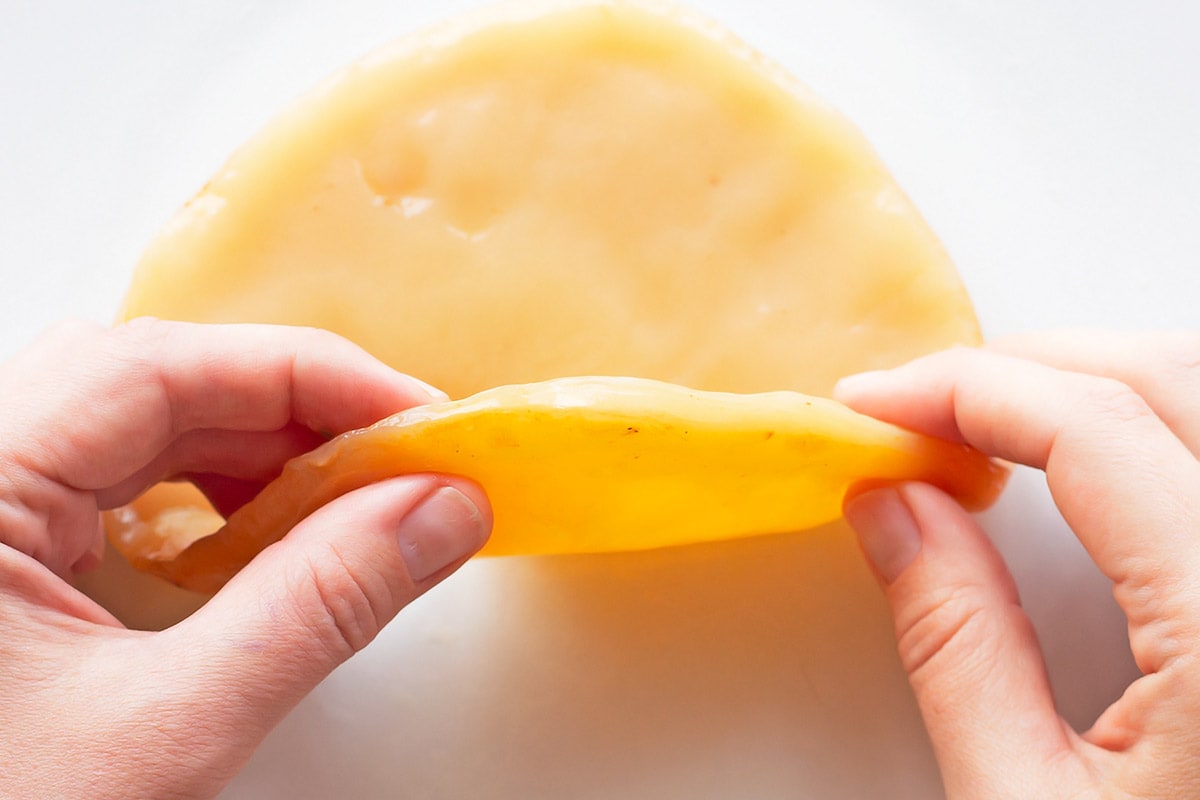
What is a SCOBY?
A SCOBY is a gelatinous disk that forms in a batch of sweetened tea and is an important part of the kombucha-making process. It is generally white to tan in colour as its colour can vary depending on whether you brew your kombucha with black or green tea. A SCOBY can also vary in size and shape as it will generally grow to the size of the mouth of the brewing vessel you use. While you can certainly get a SCOBY from someone you know or purchase it as part of a kombucha kit from a business, I also have a detailed post showing how you can grow a SCOBY at home.
To grow a SCOBY at home, you will want to make sure you have a bottle of raw unflavored kombucha on hand. Then, in a large mason jar, you blend 2 cups of cooled black tea sweetened with ¼ cup cane sugar and 1 cup of raw kombucha. Sometimes store-bought kombucha has yeast strands, fuzzy bits, or even a baby SCOBY in it. These can be beneficial to add to your cooled tea mixture when you are attempting to grow a full-sized SCOBY to brew kombucha at home. Next, cover the jar with a paper towel and place it in a warm place for 2-4 weeks. A jellyfish-like SCOBY will form on top. At ¼-inch thickness, it will be ready to use.
Large Dispenser Jar
Once you have your SCOBY ready, you can go about starting your first batch of home-brewed kombucha with this kombucha recipe. For that, you will need a large jar, crock, or plastic container to hold the brew. Any kind of large vessel (1 gallon or more) will work, but a jar with a dispenser tap will make bottling the finished kombucha a lot easier. I have a 1-gallon glass jar very similar to this one.
One important component to keep in mind when you wash your dispenser jar is to either wash it with vinegar and hot water or a specialized cleaning solution commonly used to clean equipment used in beer and winemaking. This is to remove any impurities that might cause spoilage or mold growth during fermentation.
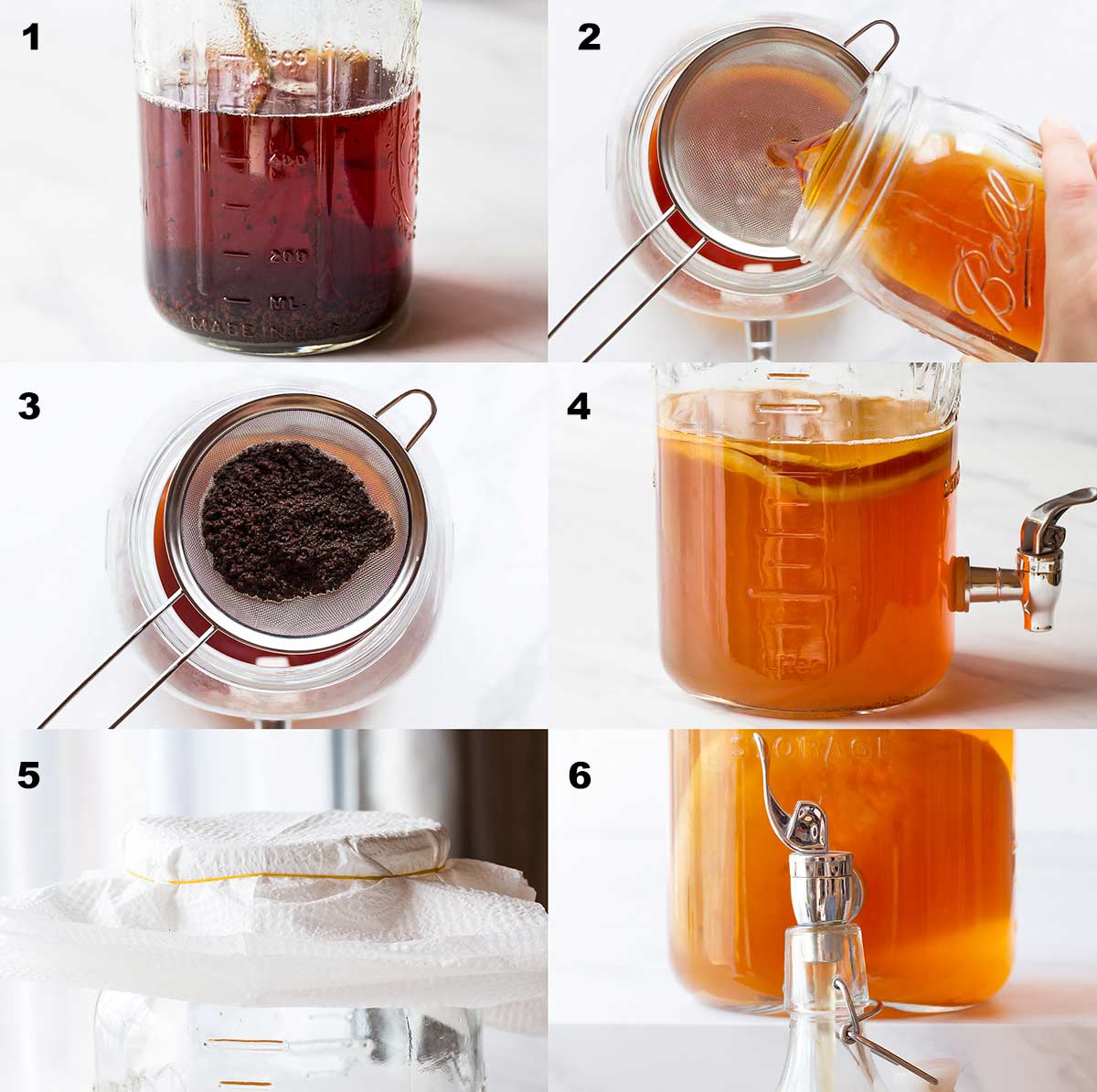
How to Brew this Homemade Kombucha Recipe
After you have ensured you have a SCOBY on hand, you can begin making this kombucha recipe by brewing your tea.
1. Combine your choice of loose leaf tea (black, green or white) in a pot or glass jar with white granulated sugar. Boil 2 cups of water and pour over the sugar tea mix. Stir until the sugar dissolves. Then, allow it to steep until the tea has cooled
2. Then strain it through a fine-mesh strainer into your brewing vessel. The fine-mesh strainer is important so that you can remove the tea leaves. However, if you choose to use tea bags, you won't have to strain the tea mixture.
3. Discard the used tea leaves.
4. Next, you top the tea with 5 cups of cold water (I prefer filtered water over tap water here) and a ½ cup of starter kombucha. Also, add your SCOBY to the brewing jar.
5. At this point, you can cover the vessel with a paper towel or napkins, or a woven cloth fastened with an elastic band and allow the mixture to ferment at room temperature for 5 to 14 days out of direct sunlight. It is essential that you don't place an actual lid on the brewing vessel or else CO2 may not be able to escape and could cause an explosion. Moreover, some oxygen is essential in this type of fermentation.
Bottling and Second Fermentation
Once your kombucha recipe is fermenting, you may notice the brew is starting to look less cloudy, new SCOBY layers are starting to form at the top and small bubbles move around. You can taste your kombucha every day starting after about 5 days.
6. Once it doesn't taste like sweet tea anymore and has a tanginess you enjoy the first fermentation is completed. You can now pour the kombucha into glass bottles with flip tops. A small funnel will come in very handy here if your brewing vessel doesn't have a dispenser attachment.
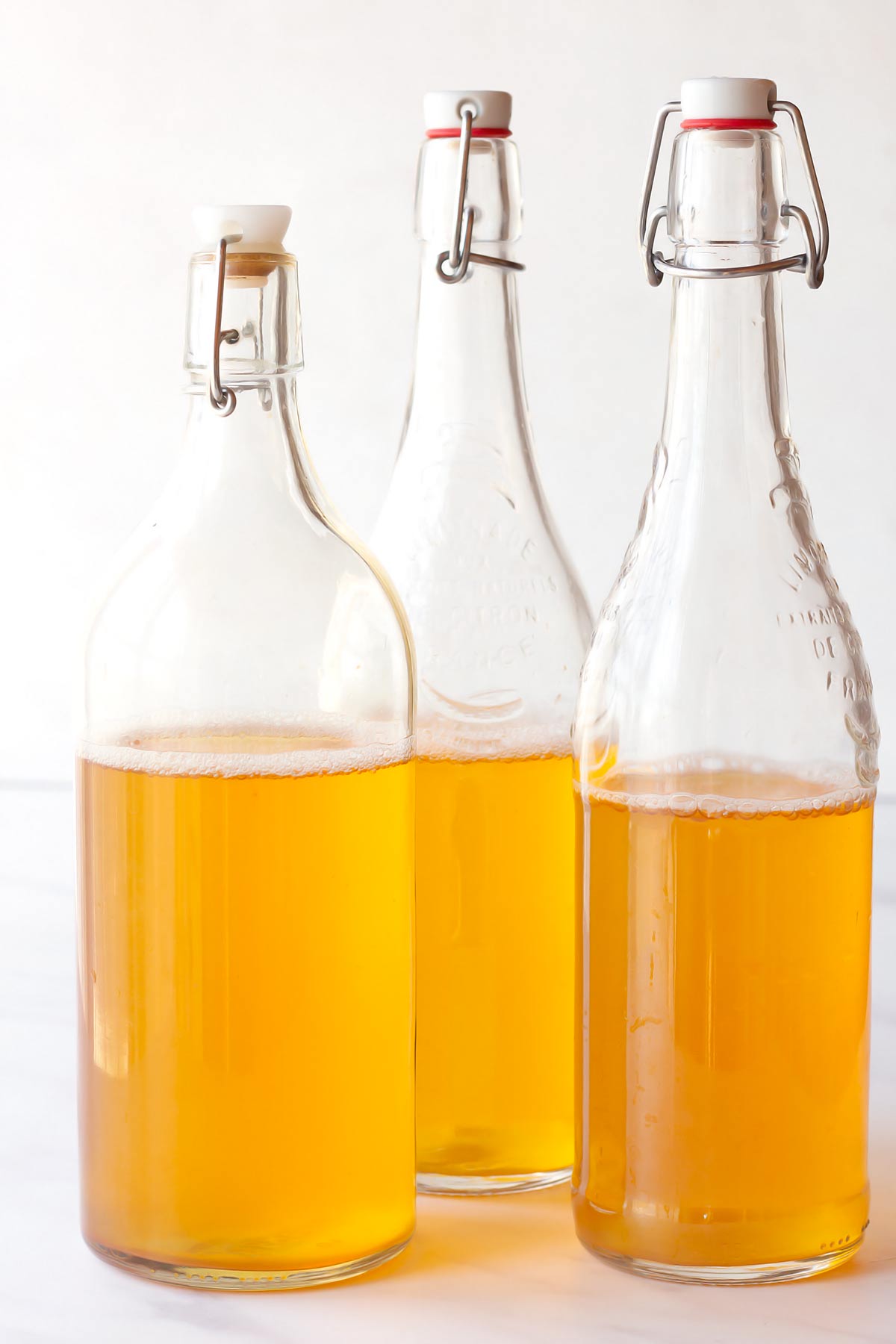
You can start enjoying your first batch of kombucha as is at this point. Store the bottles in the fridge and serve chilled.
For flavored and fizzier kombucha you can let it undergo a second fermentation. For that, you can add flavoring agents like fruit juice, cut up fresh fruit, herbs, spices, brewed herbal teas like hibiscus, and more to add flavour and colour to the kombucha.
Then, you enclose the bottles and let them sit for another day or two to develop flavor and carbonation. You may want to open the bottles once or twice a day to release some CO2 and relieve pressure in the bottles. Purchasing high-quality bottles that are meant for homemade brews are ideal here.
I have one that I got from IKEA ages ago. But actually the recycled flip-top bottles of French soda from our fancy supermarket work even better. For individual servings, I've also started to recycle the brown flip-top bottles of German beer (also from the fancy market) - thoroughly cleaned of course.
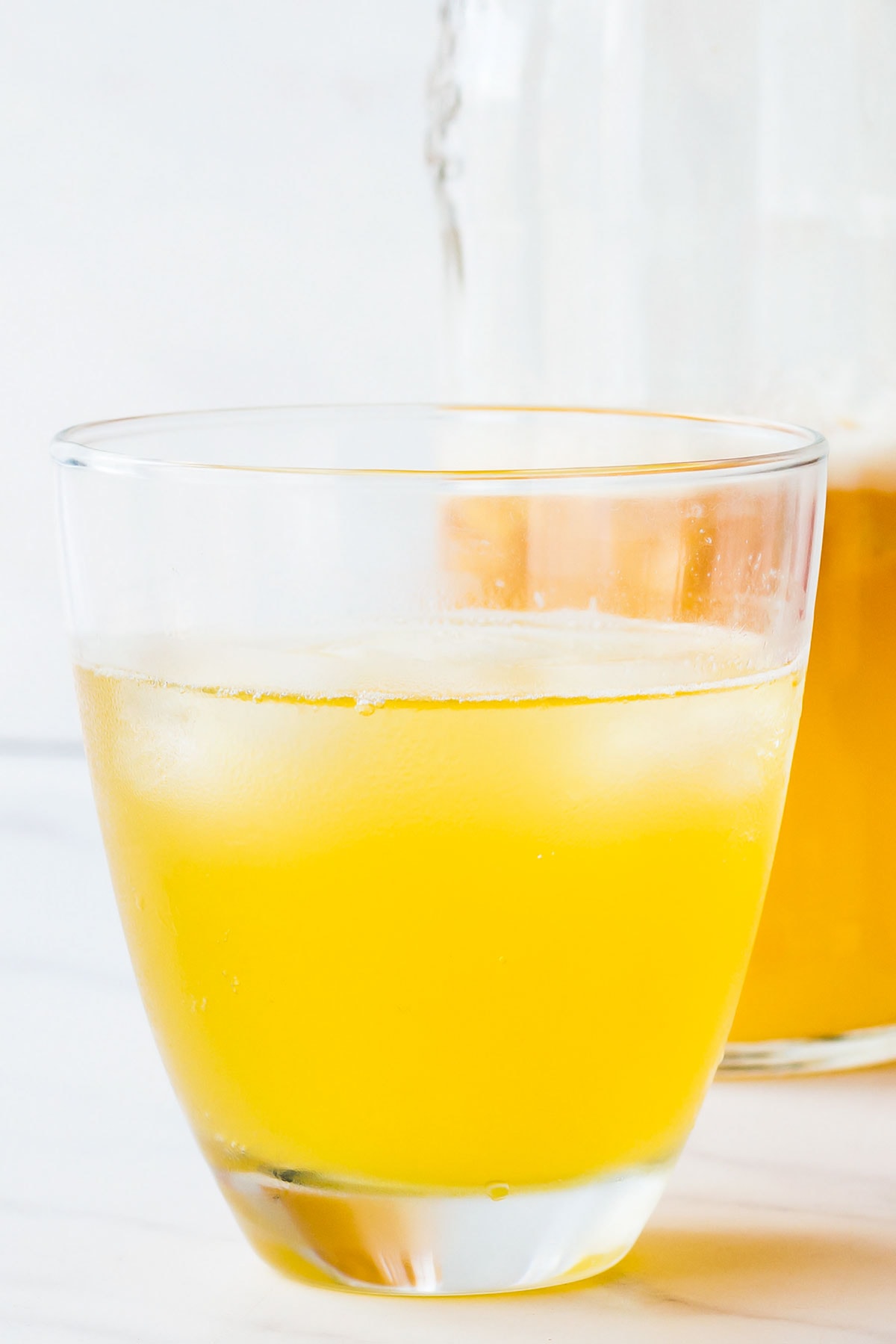
Brewing the Next Batch of Kombucha
When bottling, be sure to save at least ½ cup of kombucha as a starter for your next batch. After bottling, you can start brewing a new kombucha batch right away. Start at step 1 by steeping a strong, sweet tea mix.
I don't do this with every new batch, but every second or third time I clean the large gallon jar. I remove the SCOBY and starter kombucha that I am saving to another bowl. Then I scrub out any residue on the walls of the jar, especially at the bottom and around the area the SCOBY usually floats. Just a kitchen scrubber and hot water are fine here.
With a dispenser jar, I also remove the spout and rubber seal and clean those. I even take the spout apart and clean the inside with a thin reusable straw brush, and sometimes there will even be a baby SCOBY part growing in here.
Over time, your SCOBY will get thicker as it grows new layers with each batch. Once it gets too thick (over 1 inch) I peel some layers off to save in a SCOBY hotel. Or if that is full, I simply discard them.
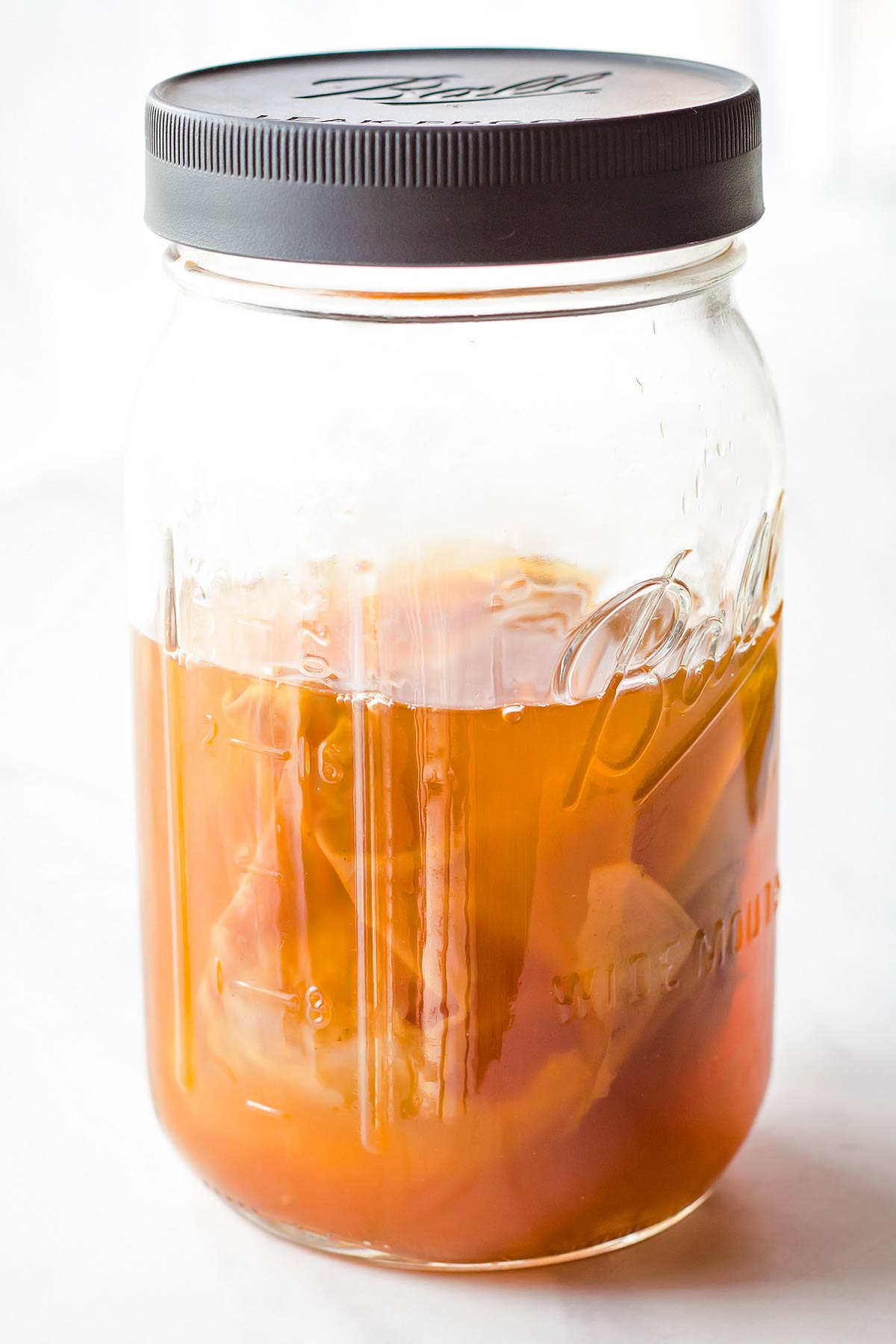
Random Questions
To make homemade kombucha, you need tea (black, green, or white), sugar, starter kombucha, and a SCOBY (symbiotic culture of bacteria and yeast).
Brewing kombucha involves steeping tea, adding sugar, starter kombucha, and a SCOBY, then fermenting the mixture for 5 to 14 days.
SCOBY, the symbiotic culture used in kombucha brewing, is a gelatinous disk formed from bacteria and yeast, typically appearing white to tan.
While not a cure-all, kombucha can promote gut health, aid digestion, and provide B vitamins. It may support overall wellness when included in a healthy diet.
Other Drink Recipes You'll Love:
Recipe

Homemade Kombucha
Equipment
- large (gallon size) jar
- fine mesh strainer
Ingredients
- 1 tablespoon loose leaf black, green, or white tea or 2-3 teabags
- ½ cup granulated sugar
- 2 cups hot water *
- 5 cups filtered water
- ½ cup kombucha
- 1 scoby
Instructions
- In a small pot or jar combine the loose leaf tea, sugar and 2 cups of hot water. Stir until the sugar is completely dissolved. Then let steep until the tea is cool.
- Now place a fine mesh strainer over the large vessel you are going to use for brewing the kombucha. Pour the cooled tea through the strainer to remove the tea leaves.
- Now pour in the remaining 5 cups of water and ½ cup of kombucha. Gently place the scoby disk into your kombucha brewing liquid and cover the jar with paper towel held in place with a rubber band.
- Let the kombucha ferment until it reaches desired tanginess. Depending on factors like the size of your scoby and the temperature in your kitchen, this can take 5-14 days. Starting on day 5 taste your kombucha every day until it is no longer just sweet tea but tangy and slightly carbonated.
- Fill the kombucha into flip top bottles (hold back ½ cup of starter kombucha for your next batch). Enjoy as is or proceed with second fermentation and flavoring of kombucha.
Notes
[adthrive-in-post-video-player video-id="G47J3vDd" upload-date="2021-10-30T04:51:39.000Z" name="Kombucha Recipe" description="Let me show you how easy it is to brew your own kombucha with this homemade kombucha recipe." player-type="default" override-embed="default"]Pin for later?



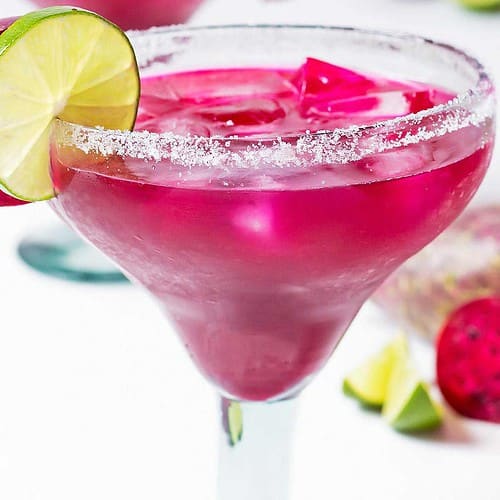

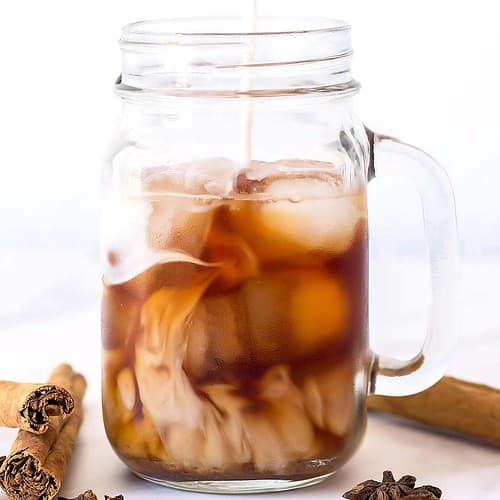
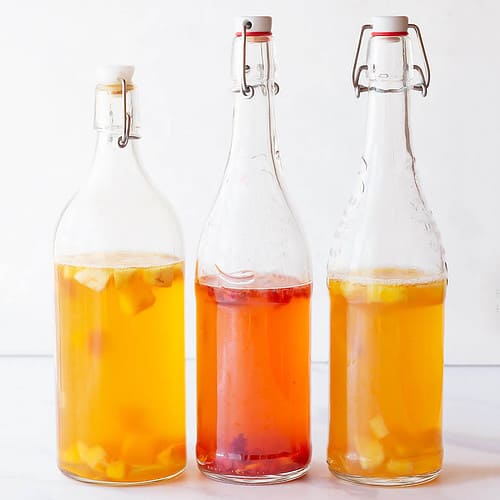
Mariya
Hi Regina, I’m new to this make your own kombucha. We love the humm brand passion fruit mango but it gets quit expensive to buy and is not always available. So here I am doing some research and ran across your recipe. I’ve brewed the black tea with sugar, letting it cool and now I’m at the ‘add raw kombucha’. Well I do have a bottle of the store bought humm, but not sure if it’s ‘raw’ am I still able to use it for growing a scoby? Please advise and thank you in advance!
Jennifer @ Leelalicious
Hi Mariya, it does seem like Humm's kombucha is in its raw form and still contains all of the bacteria needed to act as a starter for a SCOBY. While it should work for growing a SCOBY, it is best to start with plain raw kombucha rather than a flavoured variety, particularly if you plan to use the SCOBY and kombucha you make with it to start subsequent batches of kombucha. That way, you can change up the flavourings when you do a second fermentation of your kombucha. I hope this helps but don't hesitate to let us know if you have any other questions or require more clarification.